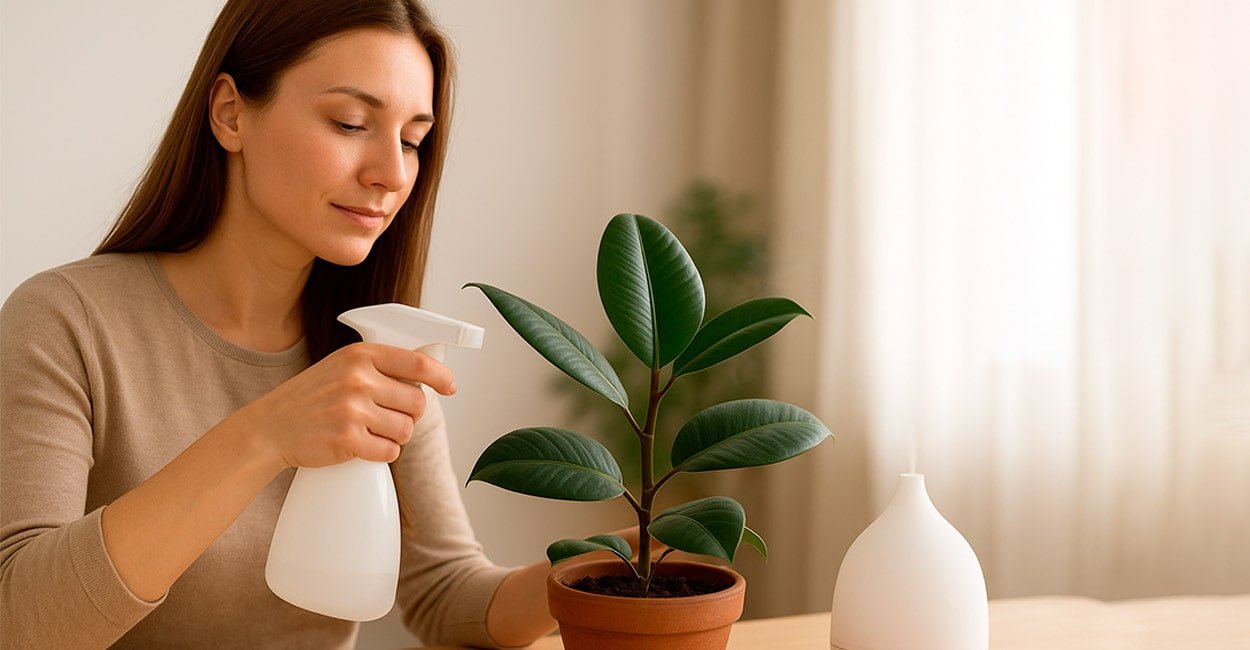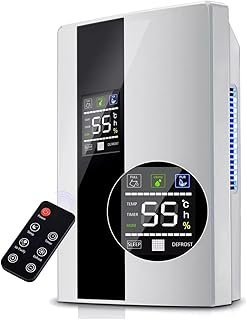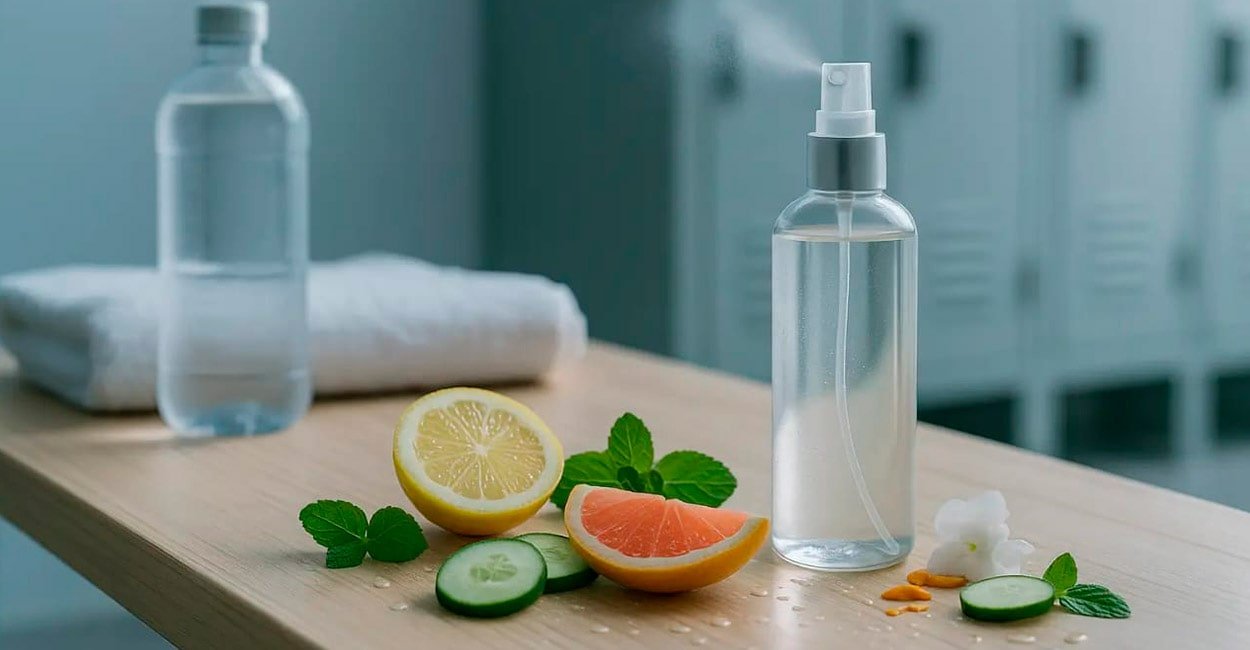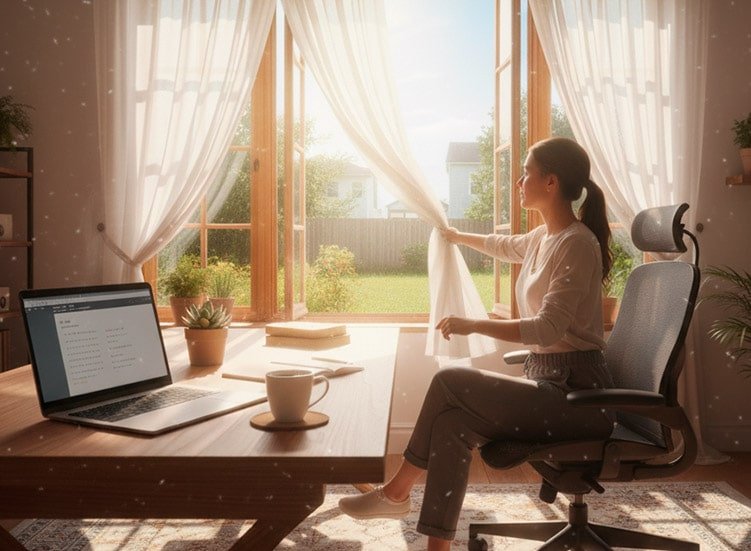Why is it important to improve your home’s air quality?
Clean, light air enhances concentration, sleep, mood, and even productivity, meaning the impact goes far beyond the physical level.
That’s why reading this guide and understanding how to improve your home’s air quality can be a real investment in well-being and quality of life.
Many people worry about outdoor pollution but overlook a crucial fact: the air inside your home can be more polluted than outdoor air.
This happens because enclosed spaces tend to trap dust, humidity, chemicals, and invisible microorganisms that directly affect your health and energy.
The World Health Organization (WHO) warns that poor indoor air quality is one of the main causes of mild respiratory discomfort, fatigue, and allergies, especially in homes with little ventilation.
🎯 Article summary:
This guide shows how to improve your home’s air quality using simple solutions like natural ventilation, plants, air purifiers, and eco-friendly products. Perfect for anyone seeking well-being, savings, and sustainability in daily life.
🌿 Main factors that compromise your home’s air quality
Before looking for solutions, it’s important to know what’s harming the air you breathe every day.
The most common factors include:
- Lack of natural ventilation: closed rooms accumulate CO₂ and odors.
- Volatile organic compounds (VOCs): found in sprays, disinfectants, paints, and scented candles.
- Excess humidity: creates the perfect environment for mold and fungi.
- Dust accumulation: especially on fabrics, carpets, and curtains.
- Appliances without maintenance: dirty air-conditioning and fan filters.
- Cigarette smoke, incense, and candles: can release fine particles and invisible toxins.
All these factors combined make indoor air feel “heavy,” causing tiredness and irritation, even for people without allergies.
Next, discover how to improve your home’s air quality naturally, simply, and effectively.
🌤️ How to improve your home’s air quality with 7 simple and affordable solutions
The good news is that anyone can make their home’s air cleaner and healthier without spending much.
These strategies combine science, well-being, and sustainability, perfect for any lifestyle.
1. Ventilate your rooms daily
Ventilation is the simplest and most overlooked step.
Opening windows for 20–30 minutes a day already helps renew oxygen and remove CO₂ and trapped odors.
Practical tip:
- Open opposite windows to create cross-ventilation.
- Ventilate especially after cooking, showering, or using cleaning products.
- If you live in a polluted area, prefer early morning or late evening ventilation.
💡 A well-ventilated home is a living home — air needs to move, just like energy.
2. Use natural plants to purify the air
Some plants act as true living filters.
NASA research showed that certain species can absorb toxins and release oxygen continuously.
The best plants to improve your home’s air quality include:
- Snake plant: hardy and excellent at purifying air.
- Pothos: ideal for low-light environments.
- Peace lily: helps reduce mold and VOCs.
- Aloe vera: releases oxygen even at night.
- Boston fern: naturally increases humidity.
Tip: You can find air-purifying plant kits and self-watering pots on Amazon, perfect for those who want to start easily and stylishly.
3. Invest in air purifiers and humidifiers
Air purifiers with HEPA filters capture up to 99% of fine particles in the air, such as dust, pollen, and smoke.
They are ideal for people living in urban areas or who frequently use air conditioning.
How to position them correctly:
- Place the purifier at the center of the room.
- Avoid placing it against walls.
- Replace the filter every 3–6 months, depending on use.
Humidifiers help maintain indoor humidity levels between 40% and 60%, which is ideal for respiratory comfort.
Air that’s too dry can cause eye and throat irritation, while overly humid air encourages mold and fungus growth.
💡 Combine an air purifier with an essential oil diffuser to enjoy both clean air and aromatic well-being.
Click to see: HEPA air purifier with ultrasonic diffuser.
4. Choose natural and sustainable cleaning products
Conventional cleaning products can release volatile organic compounds (VOCs) — chemical substances that linger in the air and irritate your respiratory system.
To avoid this, replace them with safer and more effective alternatives.
Simple homemade solutions:
- Vinegar + water: cleans glass and surfaces naturally.
- Baking soda: great for removing odors.
- Lemon juice: a natural disinfectant and deodorizer.
Besides being inexpensive, these options reduce waste and are safe for kids and pets.
Use reusable microfiber cloths to clean without spreading dust.
5. Control humidity and prevent mold
Mold is one of the main enemies of good indoor air quality.
To combat it, keep humidity levels between 40% and 60%.
How to do it:
- Use portable dehumidifiers in damp areas.
- Place activated charcoal in closets and drawers.
- Avoid drying clothes indoors without proper ventilation.
- Keep bathroom windows open after showering.
Click to see: Compact electric dehumidifier an efficient solution for small apartments.
6. Wash bedding and curtains regularly
Bedsheets, pillowcases, and curtains collect dust mites and particles and often go weeks without washing.
To keep the air clean, wash bedding every week and curtains every two months.
Extra tip: vacuum mattresses and sofas every two weeks to reduce dust mites.
These simple habits can significantly reduce that “heavy air” feeling indoors.
7. Scent the air with natural essential oils
Avoid artificial sprays they only mask odors and add pollutants to the air.
Instead, choose 100% natural essential oils, which offer real benefits for body and mind.
Some of the best essential oils are:
- Lavender: relaxing and soothing.
- Eucalyptus: refreshing and invigorating.
- Lemongrass: purifying and energizing.
Use electric or reed diffusers.
💡 Click to see: Ultrasonic aroma diffuser with LED light.
🌱 Small changes that improve your home’s air quality every day
Improving your home’s air quality is an ongoing process.
With small daily actions, you can notice results within the first week:
- Open windows whenever possible.
- Vacuum floors instead of sweeping.
- Avoid clutter and unnecessary fabrics.
- Keep at least one plant in each room, if possible.
- Clean appliance filters regularly.
These simple habits reduce fatigue, improve sleep, and even boost concentration — especially if you work from home.
| Day of the week | Recommended action |
|---|---|
| Monday | Air out all rooms for 30 minutes |
| Tuesday | Vacuum mattresses and sofas |
| Wednesday | Wash bed linens and pillowcases |
| Thursday | Check and clean air conditioner and purifier filters |
| Friday | Water plants and wipe their leaves |
| Saturday | Replace humidifier water and clean the tank |
| Sunday | Use natural aromatherapy with essential oils and do a general checkup |
Following this weekly schedule creates a home wellness routine that keeps your living space fresh, balanced, and free from impurities.
 FAQ Frequently Asked questions how to improve your home’s air quality
FAQ Frequently Asked questions how to improve your home’s air quality
You can use home air sensors that measure CO₂, humidity, and fine particles, or pay attention to signs like mold, odors, and eye irritation.
No. It’s enough to use one in the spaces where you spend most of your time, such as your bedroom or home office.
Yes, especially species like snake plant, pothos, and peace lily, which absorb toxins and release oxygen.
Avoid them. They only mask odors but release chemical particles. Choose natural essential oils instead.
Very much. Ideally, keep it between 40% and 60%. Dry air irritates the respiratory system, while excessive humidity encourages mold growth.
🌿 Conclusion on how to improve your home’s air quality and overall well-being
The air you breathe is just as important as what you eat or drink.
Taking care of your home’s air quality means taking care of yourself, your energy, and the people who live with you.
With simple actions—ventilating, purifying, cleaning, and naturally scenting the air—you can transform your home into a true refuge of calm and health.
So, why not start today?
Choose one tip from this guide and put it into practice.
In just a few days, you’ll feel the difference: easier breathing, better sleep, and a genuine sense of well-being.
🔗 Recommended reading on Tudum Blog
Want to learn more about how to improve your home’s environment?
Then check out our other article:
👉Natural light for wellness, A guide to using the right lighting to boost mood and productivity
Click here for more content on Health & Wellness.







